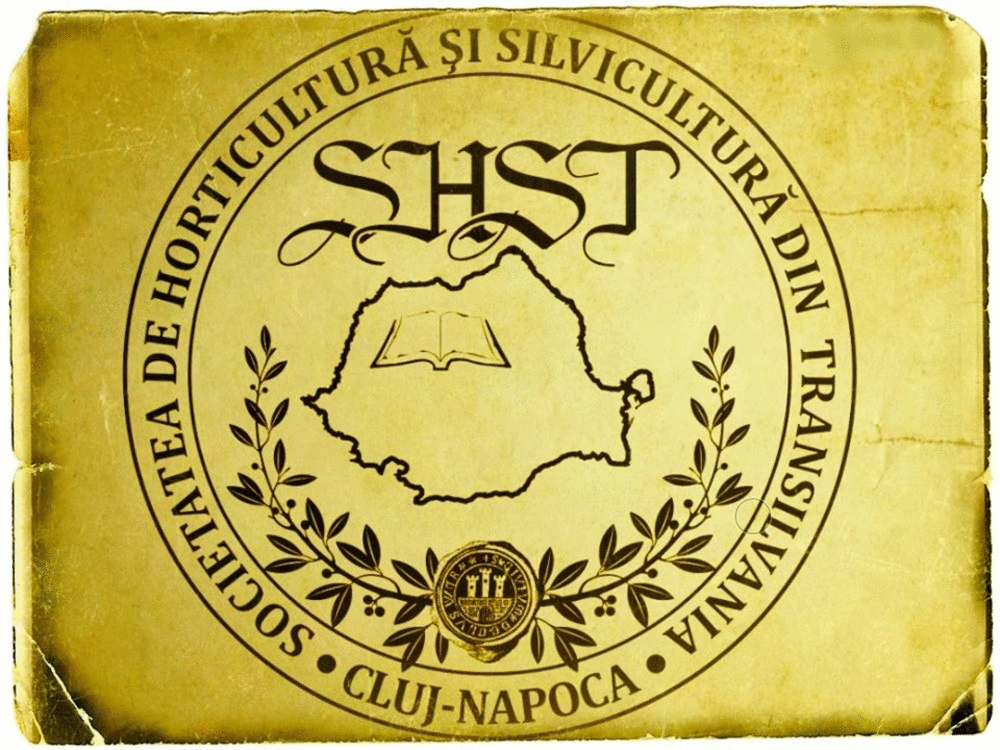Influence of biologics on the productivity of winter wheat varieties under irrigation conditions
DOI:
https://doi.org/10.55779/nsb15211352Keywords:
biologics, irrigation, variety, winter wheat, yieldAbstract
The aim of the research was to determine the influence of varietal characteristics, pre-sowing seed treatment and irrigation on the yield of winter wheat (Triticum aestivum L.). Experimental studies were carried out in the conditions of Mykolayiv National Agrarian University (Ukraine) during 2019-2022 yrs. It was found that among the studied variety of winter wheat, the highest grain yield was distinguished by the variety ‘Ozerna’ and ‘Duma Odes’ka’. On average, for pre – sowing seed treatment and irrigation options, these variety formed yields at the level of 6.78 and 6.95 tha–1, which was higher than the grain yield of ‘Anatoliya’ variety by 4.1 up to 6.5%, and then the yield of ‘Ovidii’ variety by 3.9 up to 6.3%. It was proved that preparations for pre-sowing seed treatment contributed to the formation of more productive stems and grain mass from one ear in winter wheat plants. So, on average, over the years of research, variety and irrigation options, for the use of Azotofit-R, the number of productive stems increased by 34-74 PCs./ m2 compared to other seed treatment options. At the same time, the yield of winter wheat grain was also slightly higher with the use of Azotofit-R biologics. It was found that the use of irrigation provided an increase in grain yield by 1.66-2.19 tha–1 or 23.1-27.2%, depending on the studied winter wheat variety. At the same time, the ‘Duma Odes’ka’ variety had a higher grain yield under irrigation (8.06 tha–1), while in conditions without irrigation, a slightly higher grain yield was formed by plants of the ‘Ozerna’ variety (5.87 tha–1). On average, over the years of research, the highest yield of winter wheat grain was provided by the cultivation of the ‘Duma Odes’ka’ variety for pre-sowing seed treatment with Azotofit - R biologics and irrigation–8.38 tha–1.
Metrics
References
Afreena S, Omar RA, Talreja N, Chauhan D, Mangalaraj RV, Ashfaqc M (2022). Nanostructured materials based on copper/carbon as a plant growth stimulant. Nanobiotechnology for Plant Protection 367-391. https://doi.org/10.1016/B978-0-12-823833-2.000040
Almashova VS, Skok SV (2022). Effectiveness of application of biological preparations and plant growth regulators for growing agricultural crops in the southern steppe zone of Ukraine. Bulletin of Sumy National Agrarian University. The series “Agronomy and Biology” 1 (47):11-17. https://doi.org/10.32845/agrobio.2022.1.2
Bazalii VV, Boichuk IV, Lavrynenko YuО, Bazalii HH, Domaratskyi YeO, Larchenko OV (2019). Problems and productivity of winter wheat varieties selection with increased environmental stability. Factors in Experimental Evolution of Organisms 24:20-25. https://doi.org/10.7124/FEEO.v24.1071
Biel W, Stankowski S, Sobolewska M, Sadkiewicz J, Jaroszewska A, Puzynski S (2016). Effect of selected agronomic factors on the baking quality of winter spelt strains and cultivars (Triticum aestivum ssp. spelta L.) in comparison with common wheat (Triticum aestivum ssp. vulgare). Romanian Agricultural Research 33:251-258.
Djaman K, O’Neill M, Owen C, Smeal D, West M, Begay D, … Lombard K (2018). Long-Term winter wheat (Triticuma estivum L.) seasonal irrigation amount, evapotran spiration, yield, and water productivity under semiarid climate. Agronomy 8(6):96. https://doi.org/10.3390/agronomy8060096
Drobitko A, Markova N, Tarabrina A.-M, Tereshchenko A. (2022). Land degradation in Ukraine: retrospective analysis 2017-2022. International Journal of Environmental Studies. https://doi.org/10.1080/00207233.2022.2160079
Gamayunova V, Panfilova A (2020). Effect of fertilization on the accumulation overground mass of spring barley plants. Scientific Horizons 5:7-14.
Ghane E, Feizi M, Mostafazadeh-Fard B, Landi E (2009). Water productivity of winter wheat in different irrigation / planting methods using saline irrigation water. International Journal of Agriculture and Biology 11(2):1560-8530.
Hashem A, Tabassum B, Fathi Abd Allah E (2019). Bacillus subtilis: a plant-growth promoting Rhizobacterium that also impacts biotic stress. Saudi Journal of Biological Sciences 26:1291-1297. https://doi.org/10.1016/j.sjbs.2019.05.004
Holtappels D, Fortuna K, Lavigne R, Wagemans J (2021). The future of phage biocontrol in integrated plant protection for sustainable crop production. Current Opinion in Biotechnology 68:60-71. https://doi.org/10.1016/j.copbio.2020.08.016
Hongjie L, Timothy DM, Intoshc RA, Yang Z (2019). Breeding new cultivars for sustainable wheat production. The Crop Journal 7(6):715-717.
Hudzenko VM, Polischuk TP, Babii OO, Lysenko AA, Yurchenko TV (2021). Comprehensive evaluation of spring barley breeding lines in yield, stability and tolerance to biotic and abiotic factors under condition of the central part of the Ukrainian Forest-Steppe. Plant Varieties Studying and Protection 17(1):30-42. https://doi.org/10.21498/2518-1017.17.1.2021.228206
Jacob J, Krishnan GV, Thankappan D, Amm D (2020). Endophytic bacterial strains induced systemic resistance in agriculturally important crop plants. Microbial Endophytes 75-105. https://doi.org/10.1016/B978-0-12-819654-0.00004-1
Krivenko AI, Pochkolina SV (2019). Realization of the genetic potential level of yield of different varieties of wheat and winter barley, depending on the time of sowing in the conditions of the South Steppe of Ukraine. Agrarian Bulletin of the Black Sea Littoral 92:44-52.
Ma S, Wang T, Ma S (2022). Effects of drip irrigation on root activity pattern, root-sourced signal characteristics and yield stability of winter wheat. Agricultural Water Management 271:107783 https://doi.org/10.1016/j.agwat.2022.107783
Markovska O, Hrechyshkina T (2020). Winter wheat varieties productivity of on elements of growing technology under the conditions of Southern Step of Ukraine. Agrobiology 1:96-103. https:// doi.org/10.33245/2310-9270-2020-157-1-96-103.
Martínez Cruz E, Espitia Rangel E, Villaseñor Mir H E, Hortelano Santa Rosa R (2020). The productivity of bread wheat under different irrigation conditions. Revista Mexicana Ciencias Agrícolas 11(6):1349-1360. https://doi.org/10.29312/remexca.v11i6.2050
Müller T, Behrendt U (2021). Exploiting the biocontrol potential of plant-associated pseudomonads – A step towards pesticide-free agriculture? Biological Control 155. https://doi.org/10.1016/j.biocontrol.2021.104538
Nazarenko M, Mykolenko S, Okhmat P (2020). Variation in grain productivity and quality of modern winter wheat varieties in northern Ukrainian Steppe. Ukrainian Journal of Ecology 10(3):102-108. https://doi.org/10.15421/2020_175
Nemea K, Nafady A, Tola YB (2021). Application of nanotechnology in agriculture, postharvest loss reduction and food processing: food security implication and challenges. Heliyon 7(12):e08539. https://doi.org/10.1016/j.heliyon.2021.e08539
Panfilova A, Gamayunova V, Potryvaieva N (2021). The impact of nutrition optimization on crop yield and grain quality of spring barley varieties (Hordeum vulgare L.). Agraarteadus 32(1):111-116. https://dx.doi.org/10.15159/jas.21.18
Panfilova A, Mohylnytska A (2019). The impact of nutrition optimization on crop yield of winter wheat varieties (Triticum aestivum L.) and modeling of regularities of its dependence on structure indicators. Agriculture & Forestry 65(3):157-171. https://doi.org/10.17707/AgricultForest.65.3.13
Panfilova A, Gamayunova V, Smirnova I (2020). Influence of fertilizing with modern complex organic-mineral fertilizers to grain yield and quality of winter wheat in the southern steppe of Ukraine. Agraarteadus 31(2):196-201. https://dx.doi.org/10.15159/jas.20.28
Reda BM (2021). Secondary metabolites as biostimulant and bioprotectant agents: A review. Science of The Total Environment 777. https://doi.org/10.1016/j.scitotenv.2021.146204
Singh A, Tiwari S, Pandey J, Indrakant, Singh K (2021). Role of nanoparticles in crop improvement and abiotic stress management. Journal of Biotechnology 337:57-70. https://doi.org/10.1016/j.jbiotec.2021.06.022
Suciu AL, Șopterean L, Kadar R, Muresanu F, Miclea R, Florian V, Puia C (2018). The influence of the number of fungicide treatments up on the quantity and quality of winter wheat yield in climatic conditions of ARDS Turda. Romanian Agricultural Research 35:221-228
Tkachyk SO, Prysiazhnyuk OI, Leshchuk NV (2017). Methodology of qualification examination of plant varieties for suitability for distribution in Ukraine. Vinnytsia: FOP Korzun D. Yu., pp 119.
Visioli G, Bonas U, Dal Cortivo C, Pasini G, Marmiroli N, Mosca G, Vamerali T (2018). Variations in yield and gluten proteins in durum wheat varieties under late-season foliar versus soil application of nitrogen fertilizer in a northern Mediterranean environment. Journal of the Science of Food and Agriculture 6(98):360-2369. https://doi.org/10.1002/jsfa.8727
Wu L, Zhatova H (2022). Study of winter wheat collection for developing initial material with low cd-uptake. Bulletin of Sumy National Agrarian University. The series “Agronomy and Biology” 1(47):3-10. https://doi.org/10.32845/agrobio.2022.1.1
Ying M (2019). Seed coating with beneficial microorganisms for precision agriculture. Biotechnology Advances 37:7. https://doi.org/10.1016/j.biotechadv.2019.107423
Zhang C, Xie Z, Wang Q, Tang M, Feng S, Cai H (2022). AquaCrop modeling to explore optimal irrigation of winter wheat for improving grain yield and water productivity. Agricultural Water Management 266:107580. https://doi.org/10.1016/j.agwat.2022.107580
Zhou L, Liao S, Wang Z, Wang P, Zhang Y, Yan H, Gao Z, Shen S, Liang X, Wang J, Zhou S (2018). A simulation of winter wheat crop responses to irrigation management using CERES-Wheat model in the North China Plain. Journal of Integrative Agriculture 17(5):1181-1193. https://doi.org/10.1016/S2095-3119(17)61818-5
Downloads
Published
How to Cite
Issue
Section
License
Copyright (c) 2023 Antonina PANFILOVA, Margaryta KORKHOVA, Natalia MARKOVA

This work is licensed under a Creative Commons Attribution 4.0 International License.
Papers published in Notulae Scientia Biologicae are Open-Access, distributed under the terms and conditions of the Creative Commons Attribution License.
© Articles by the authors; licensee SMTCT, Cluj-Napoca, Romania. The journal allows the author(s) to hold the copyright/to retain publishing rights without restriction.
License:
Open Access Journal - the journal offers free, immediate, and unrestricted access to peer-reviewed research and scholarly work, due SMTCT supports to increase the visibility, accessibility and reputation of the researchers, regardless of geography and their budgets. Users are allowed to read, download, copy, distribute, print, search, or link to the full texts of the articles, or use them for any other lawful purpose, without asking prior permission from the publisher or the author.













.png)















